There is mysterious lake in the magnificent Gharval Himalaya ― Roopkund. For more than 1,000 years around the lake lie several hundreds of dead people who most likely died in an extreme hailstorm. Though, there are various speculations behind these ancient bones. On the other side, alpine forests, green meadows, and snow-capped mountains are the specialities of the region, making it a perfect adventurous tourist attraction.
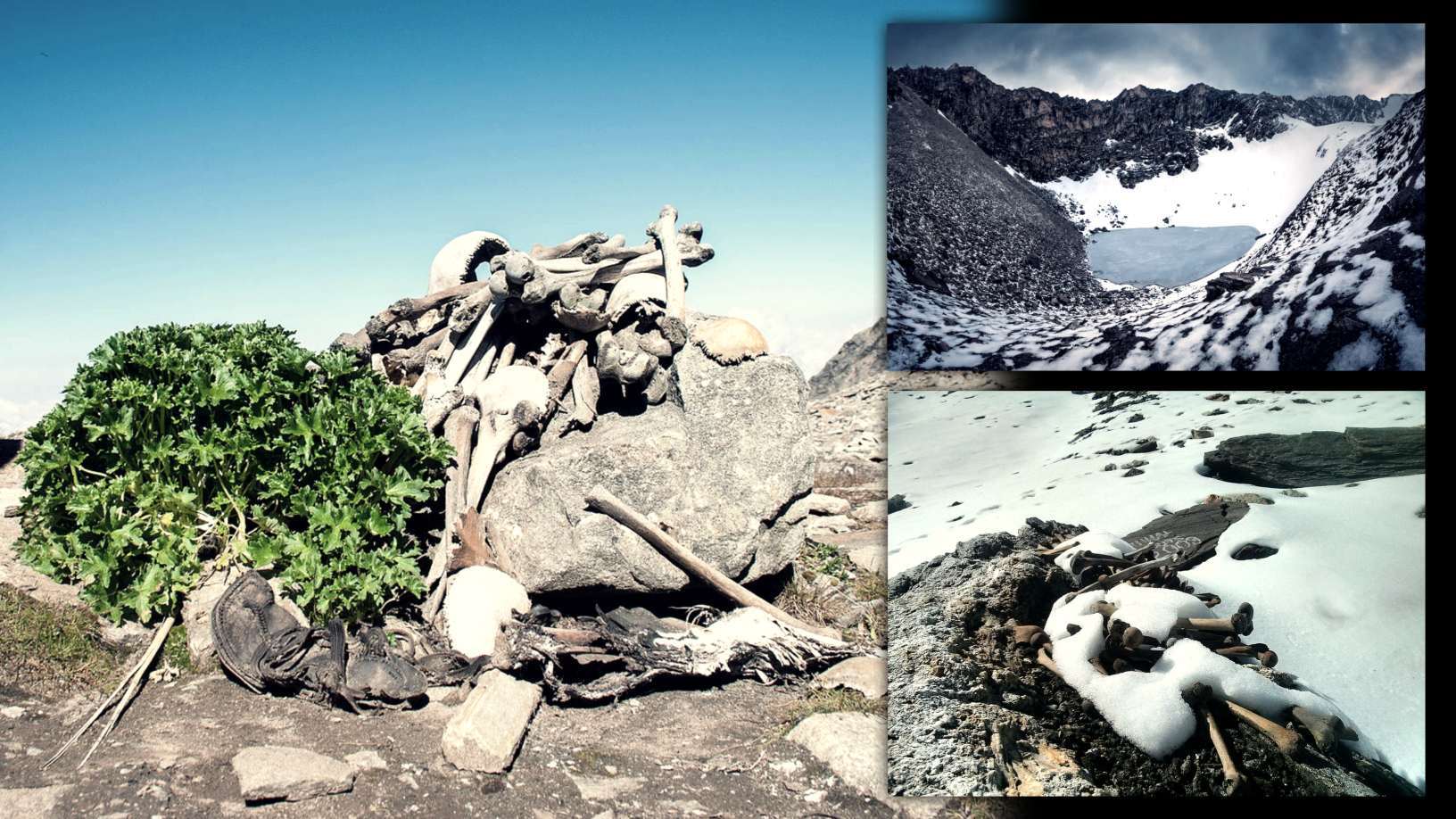
Roopkund Lake – the lake of skeletons
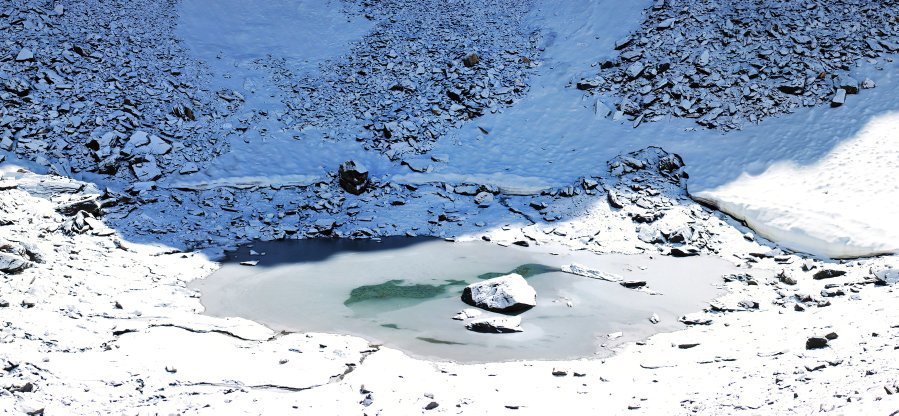
Nestled deep in the Himalayan mountains at 5,029 meters above sea level, Roopkund Lake is a small body of water ― approximately 40 meters in diameter ― that is colloquially referred to as Skeleton Lake. Because in the summer, as the Sun melts the ice around the lake, there opens dreadful sight ― bones and skulls of several hundred ancient humans and horses lying around the lake.
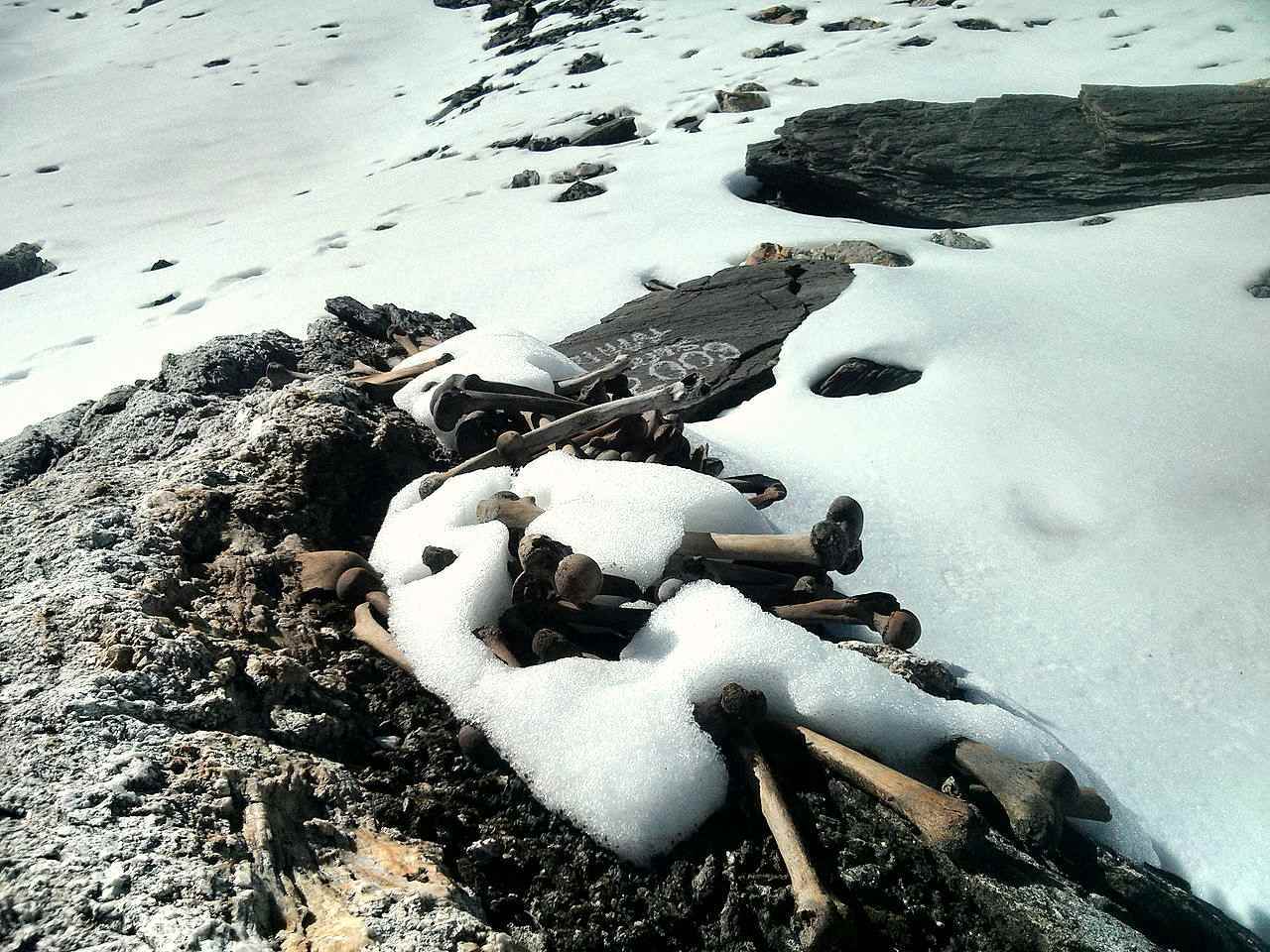
It is not fully clear whether local people knew about this in earlier times or not ― but first written reports appear in 1898. In 1942, a ranger reported about the bones and flesh seen in melting ice and this arose disquiet among military personnel fearing of surprise attack of Japanese army.
Low temperature, rarified and clean air helped to preserve the bodies of deceased better than it would happen elsewhere. As the ice melts (nowadays it melts more than before), even flesh is revealed. Ice and landslides have pushed some bones in the lake.
The origins of the skeletons of Roopkund Lake
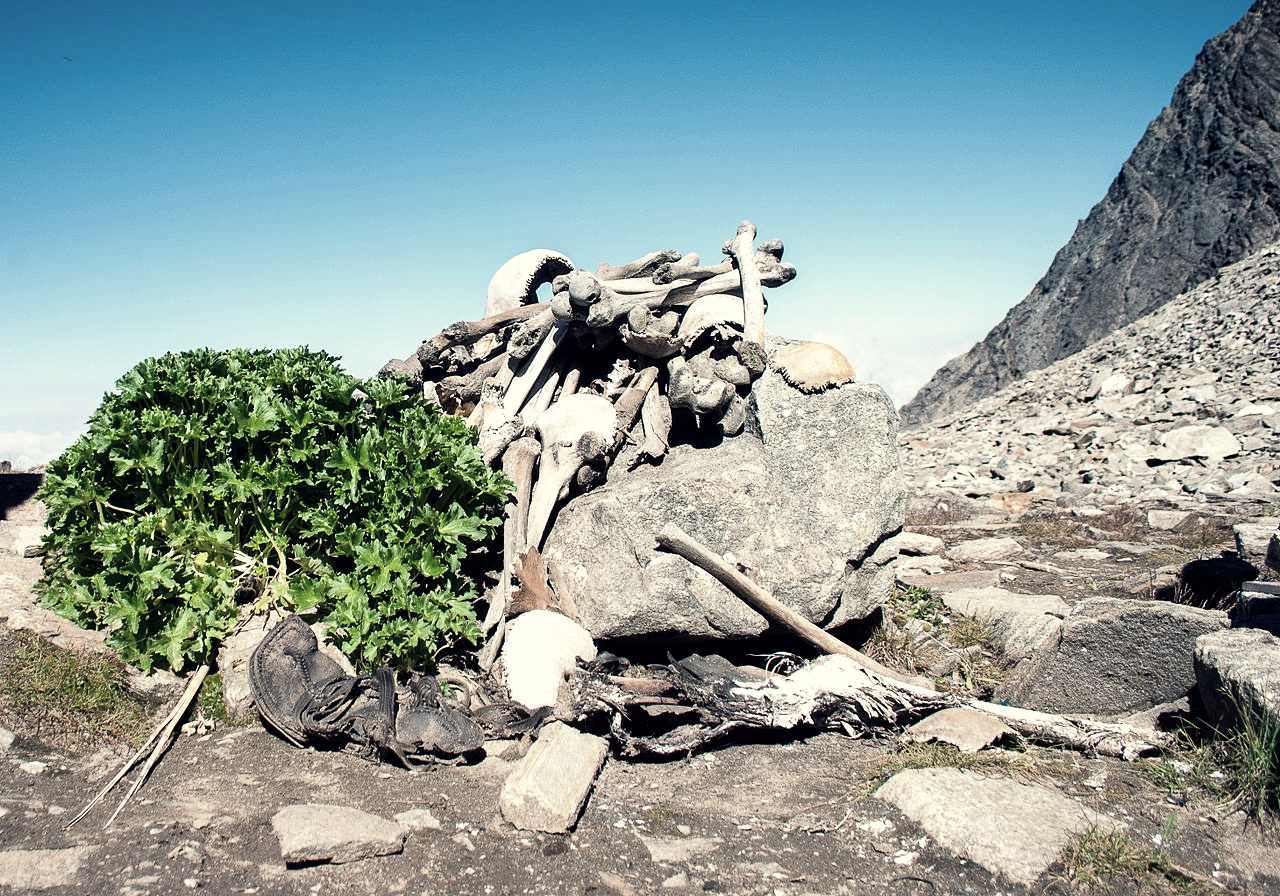
Little is known about the origin of these skeletons, as they have never been subjected to systematic anthropological or archaeological scrutiny, in part due to the disturbed nature of the site, which is frequently affected by rockslides, and which is often visited by local pilgrims and hikers who have manipulated the skeletons and removed many of the artifacts.
There have been multiple proposals to explain the origins of these skeletons. Himalaya is extremely rich with legends and area of Roopkund is not an exception. According to one mythological legend, Goddess Nanda Devi and Lord Shiva passed by this area after a successful fight with demons. Nanda Devi wanted to quench her thirst and Shiva created this lake for her. When Nanda Devi bent over the lake, she could see her clear and beautiful reflection ― thus the lake got name “Roopkund” which literally means look/shape lake.
Another folklore describes a pilgrimage to the nearby shrine of the mountain goddess, Nanda Devi, undertaken by a king and queen and their many attendants, who ― due to their inappropriate, celebratory behavior ― were struck down by the wrath of Nanda Devi. It has also been suggested that these are the remains of an army or group of merchants who were caught in a storm. Finally, it has been suggested by the scientists that they were the victims of an epidemic.
DNA analyses suggest another queer history behind the Roopkund skeletons
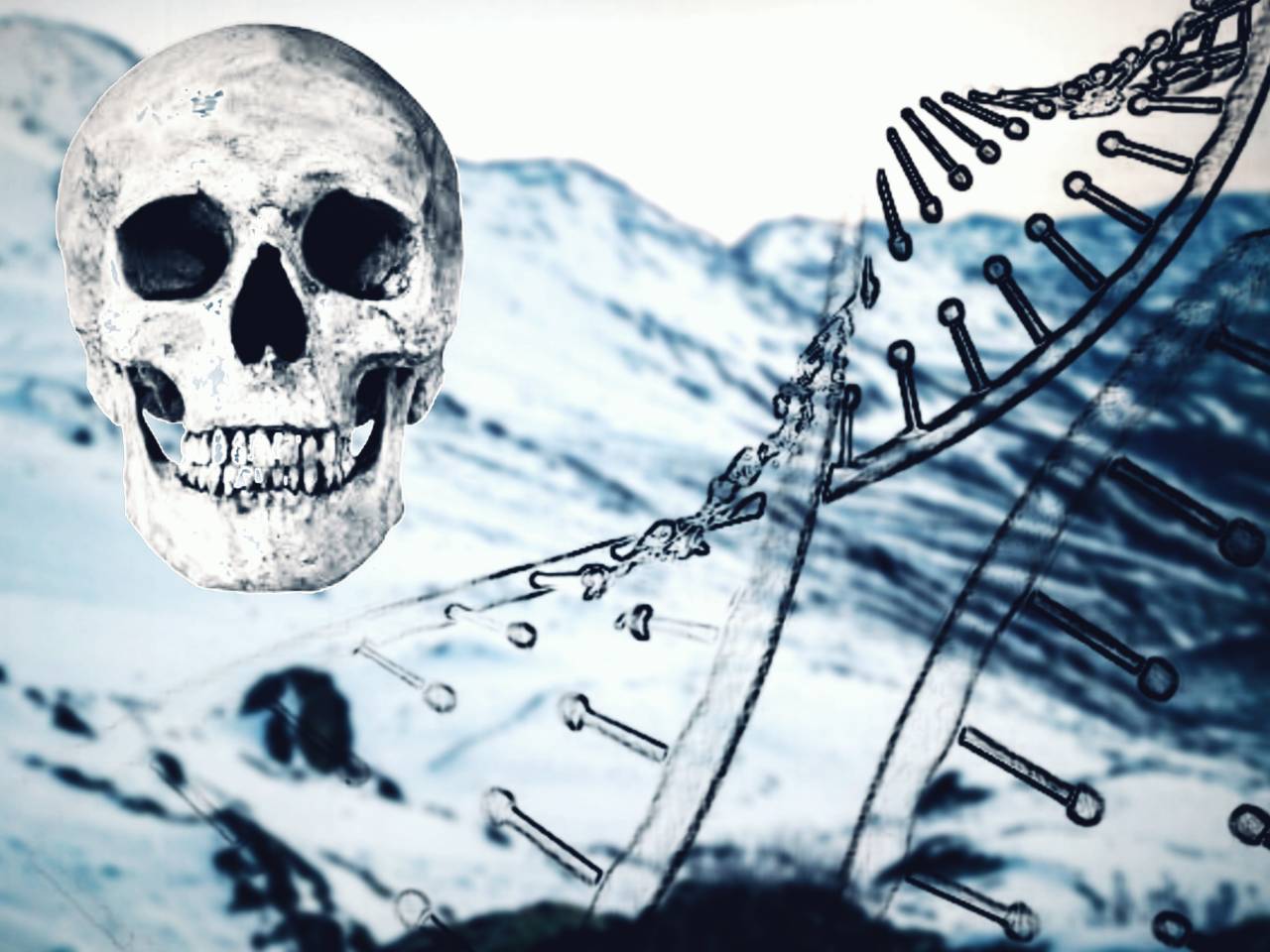
Now, to shed light on the origin of the skeletons of Roopkund, researchers have analyzed their remains using a series of bioarcheological analyses, including ancient DNA, stable isotope dietary reconstruction, radiocarbon dating, and osteological analysis.
They have found that the Roopkund skeletons belong to three genetically distinct groups that were deposited during multiple events, separated in time by approximately 1000 years. These findings refute previous suggestions that the skeletons of Roopkund Lake were deposited in a single catastrophic event.
The new results show that there were 23 people with south Asian ancestry at Roopkund, but they died during one or several events between the 7th and 10th centuries A.D. What’s more, the Roopkund skeletons contain another group of 14 victims who died there a thousand years later ― likely in a single event. And unlike the earlier South Asian skeletons, the later group at Roopkund had a genetic ancestry tied to the Mediterranean—Greece and Crete, to be exact.
Why was a Mediterranean group at Roopkund, and how did they meet their end? Researchers don’t know and aren’t speculating. Most scholars believe that Roopkund victims were pilgrims who died during the Raj Jat pilgrimage after getting caught in a severe hailstorm.
Did the Mediterranean group come for the Raj Jat pilgrimage and then stay at the lake long enough to meet their ends there? According to the DNA evidence, there’s no other thought than this for now, however, scientists say that this type of scenario wouldn’t make any sense.




